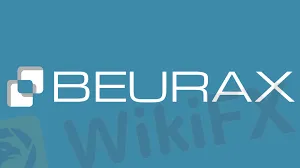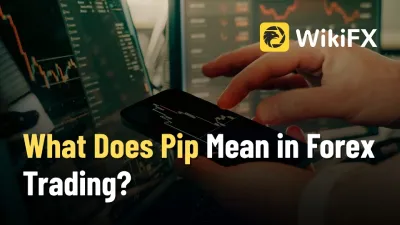Celebrate the New Year and Usher in a Safer 2026 for All Traders!
As the new year begins, WikiFX extends our sincere gratitude to traders worldwide, our industry partners, and all users who have consistently supported us.
简体中文
繁體中文
English
Pусский
日本語
ภาษาไทย
Tiếng Việt
Bahasa Indonesia
Español
हिन्दी
Filippiiniläinen
Français
Deutsch
Português
Türkçe
한국어
العربية
Abstract:Ponzi scams are as common as they've ever been. Take a look at the Securities and Exchange Commission's historical enforcement actions in recent years. Despite this, investors continue to be defrauded of their hard-earned funds.

Ponzi schemes are as prevalent as ever. Just have a gander at past enforcement actions taken by the Securities and Exchange Commission over past years. Despite this prevalence, investors continue to get bilked out of their hard-earned money.
Only days ago, Canadian authorities charged a couple with various crimes stemming from a Calgary based Ponzi Scheme which saw 38 investors defrauded out of over $5 million CAD.
Naturally, with the hype surrounding cryptocurrencies in recent years, such schemes have become commonplace when dealing with digital assets. The most recent of which, appears to be a company by the name of Beurax.
Ponzi Schemes typically take shape as illegal investment programs. They are structured in such a way, that their eventual collapse is inevitable.
While promises made to investors may vary, they usually come in the form of lucrative guaranteed returns. As investors become involved in the schemes, their newly invested funds are used to pay out ‘returns’ to those which came before them. As such, the lifespan of such schemes is based on the ability of their orchestraters to continue attracting fresh investments, as this is required to remain solvent.
Those responsible will continue the charade, watching closely, until the scheme reaches a tipping point at which new capital will not cover the returns to those which invested first. When this occurs, the orchestrators typically pull off an ‘exit-scam’. This usually involves going dark, disappearing overnight. Websites and social media accounts may be shut-down, and client withdrawals are ceased. All the while, the orchestrators make off with a hearty slush fund generated from the holdings of unsuspecting investors.
As stated, one of the most recent examples of a suspected Ponzi Scheme would be Beurax. This is a company which promised guaranteed returns to its clients – as high as 3.5% daily! – through use of its intuitive trading bots. Clients would essentially deposit their holdings into Beurax accounts, handing over control for the company to trade on their behalf (despite no real proof that trading ever occurred).
Although many in the crypto community sounded warning bells over Beurax for months, countless individuals appear to have been burned by the company, as it has now gone dark – suspected of completing a successful exit-scam.
In order to pull off what it did, Beurax and those which promoted its services, often touted that the company was registered in Australia, and boasted alleged strong leadership.
Unfortunately, many of those affected by such scams are victims of greed. The old adage ‘if it sounds too good to be true, it probably is’, is most appropriate here. Simply put, despite the outlandish nature of the claims made by such companies, many are too enticed by the potential for massive returns on their investments in short periods of time. The result is overlooking the obvious risks, both legally and financially, and eventually paying the price.
With regards to Beurax, Canadian investors in particular appear to have been taken advantage of. Due to the popularity of the scheme within the nation, multiple warnings were issued by regulators. Each of which was put out prior to the companys purported exit-scam.
On January 26th, 2021 the British Columbia Securities Commission warned that ‘Beurax is not registered to trade in, or advise on, securities or derivatives in BC.’
On February 24th, 2021 the Financial and Consumer Services Commission (FCNB), isueds a similar warning towards residents of New Brunswick.
As a sudden spike in withdrawals is often the tipping point for Ponzi schemes, warnings such as these perhaps played a role in the demise of Beurax. Once regulators warn the public against the company, withdrawals would presumably increase, while deposits would decrease. Sure enough, it was just over a month after the second warning the Beurax went dark.
Beurax is by no means the only Ponzi Scheme to take advantage of unsuspecting investors interested in cryptocurrencies. While the scope of Beurax and its apparent exit scam is yet to be determined, the following were each staggering in their reach around the world.
BitConnect
Roughly $4 billion USD taken from investors
OneCoin
Roughly $250 million USD taken from investors
Disclaimer:
The views in this article only represent the author's personal views, and do not constitute investment advice on this platform. This platform does not guarantee the accuracy, completeness and timeliness of the information in the article, and will not be liable for any loss caused by the use of or reliance on the information in the article.

As the new year begins, WikiFX extends our sincere gratitude to traders worldwide, our industry partners, and all users who have consistently supported us.

Dear Forex Traders, When choosing a forex broker, have you ever faced these dilemmas? Dozens of broker advertisements, but unsure which one is truly reliable? Online reviews are either promotional content or outdated/incomplete? Want to learn about real users’ deposit/withdrawal experiences but can’t find firsthand accounts? Now, your experience can help thousands of traders and earn you generous rewards! The campaign is long-term and you can join anytime.

Markets turn cautious as investors await the Fed’s December meeting minutes. The US Dollar stabilizes near 98.10, gold drops sharply from record highs, while GBP/USD, EUR/USD, and USD/JPY react to central bank signals.

In forex trading, a pip is the smallest unit of price movement between two currencies. It’s used to measure changes in exchange rates, calculate profits or losses, and manage trading strategies effectively.
